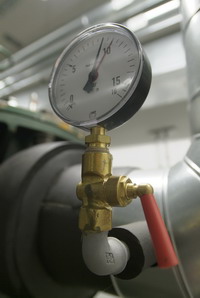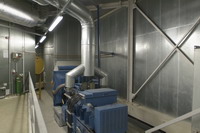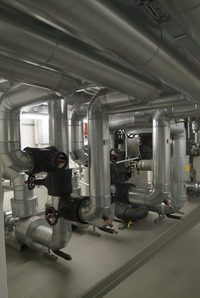Air-conditioning
Even during the more extreme seasons, the Stadttor depends on good value and ecologically sensible technology.
When the outside temperature is low, the building is heated by using waste heat from a nearby coal power station and heat recovery from used air.
When the outside temperatures go up, ceilings with integrated cooling systems provide the work spaces with cool air, without any draft. These cooling ceilings – installed throughout an area of approx. 13,500 m² – are made of copper pipes above the suspended acoustic ceiling and are filled with cold water when needed.
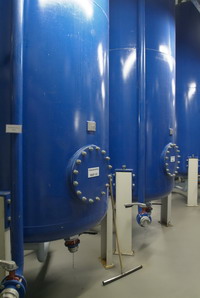 These are provided with necessary energy via plate heat exchangers along the naturally cool ground.
These are provided with necessary energy via plate heat exchangers along the naturally cool ground.
Using a combination of sorption technology and adiabatic cooling, comfortable, dehumidified fresh air is pumped into the offices.
The system is publically subsidized due to its ecological aspects.
As such, the Düsseldorf Stadttor allows people to work without feeling fatigued, while not harming the environment.
Because of its ecologically sound design, the state of North-Rhine-Westphalia supported the development of the building and facade technology via its public support program.
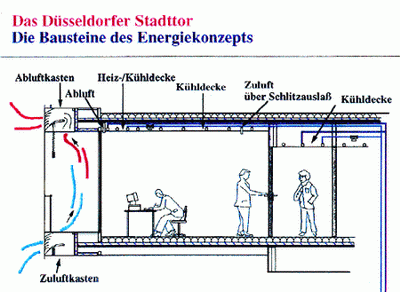
Data and facts
Air conditioning:
- Climatic buffers and isolation through the double glass facade
- Fresh air circulation through computer-assisted air-conditioning system
- Draft-free cooling and heating through cold and warm water circulation in grid ceilings
- Sorption technology/adiabatic cooling to regulate the mechanical fresh-air supply
- Additional heating through heat recovery from used air, as well as waste energy
- Reduction of energy costs by approx. 70 percent compared to fully air-conditioned high-rise buildings
(Status: 2012)

